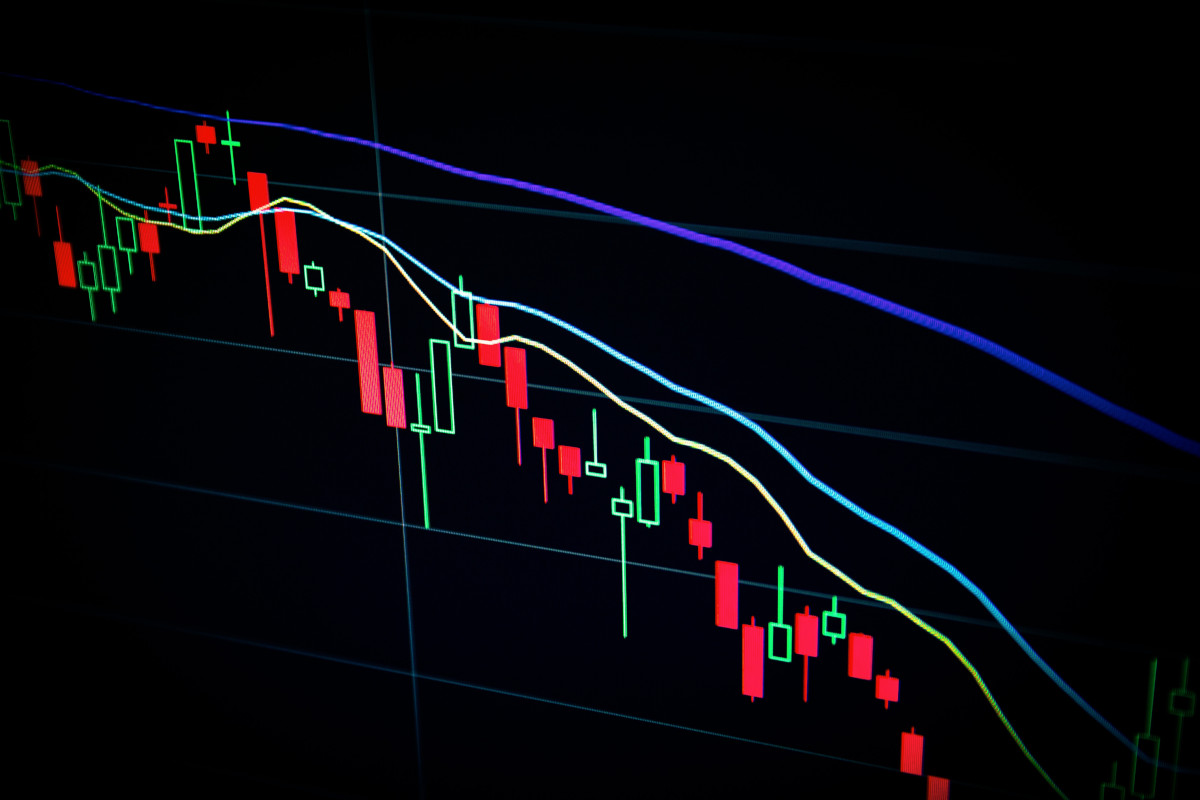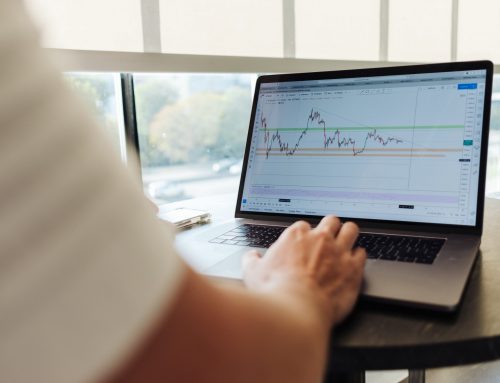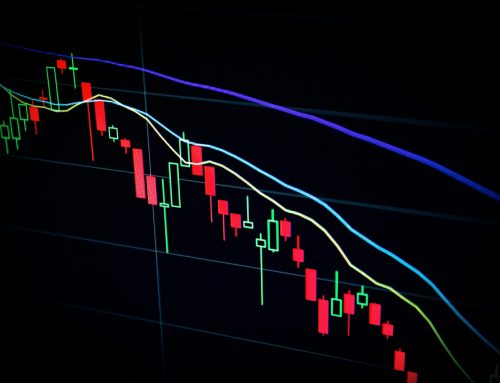Want to learn all about swing trading patterns? You’ve come to the right place. Today, we’re going to take a deep dive into the best chart patterns for swing trading and teach you how to uncover and assess opportunities in the stock market. These include:
- Ascending Triangle
- Descending Triangle
- Head and Shoulders
- Inverted Head and Shoulders
- Range Consolidation
- Double Top
- Double Bottom
- Cup and Handle
- Flags
Being able to consistently find winning opportunities, vet them, and then time your entry and exit perfectly is what separates the most successful swing traders from the rest.
But analyzing chart patterns can be complex – especially if you’re getting started with swing trading for beginners. And even those who have confidence using these patterns are stuck in front of their screens throughout the entire trading session.
What if there was a simpler, more efficient way to gain the insights you need from these patterns? There is – and today, we’ll introduce you to a trading system that will transform the way you view the stock market. First, let’s provide a detailed overview of swing trading chart patterns.
Featured Courses:
What are Swing Trading Patterns?
First things first – what are swing trading chart patterns, exactly? These are chart formations that swing traders use to identify and assess potential opportunities in the stock market. These patterns help swing traders find entry points, where they can buy stocks and ride a price swing up or down, and exit points, where they can sell their position for a profit or limit losses. Beyond just timing your entry and exit, the pattern on your chart helps you assess whether there’s even enough of an opportunity in a given stock. It’s important that you understand how to use these in order to earn consistent swing trading profits.
The best swing trading patterns provide information on expected price movements and other factors – like volume spikes and directional momentum – that can indicate whether a stock is likely to continue its current trend (and provide an opportunity for you to make money).
These patterns come in all shapes and sizes: from bullish reversals (which signal the start of an uptrend) to bearish flags (that warn of downward momentum). There are also trendlines, channels, and more.
We wrote a complete guide on the best indicators for swing trading if you’d like to learn more. For now, let’s take a look at the best chart patterns for swing trading.
What are the Best Swing Trading Patterns?
If you ask any seasoned trader what they believe the best chart patterns for swing trading are, you’d likely get different answers. That’s because the specific patterns you follow should be influenced by your unique trading strategy.
With that said, we’ll highlight what we have found to be the most profitable swing trading chart patterns – it’s up to you to use these as you see fit. Let’s start with a great chart pattern for uncovering an upcoming bull run.
Ascending Triangle
The ascending triangle pattern is a chart formation that’s produced when price movements form an “L” shape. This signals that the buyers are in control and the stock is likely to swing up – making it one of the best swing trading chart patterns for predicting bullish reversals.
To spot this pattern, you’ll need to look for two converging trendlines on your chart: one flat horizontal line that marks resistance and another rising diagonal line (support). When these two lines meet at a point, they create an ascending triangle.
Descending Triangle
On the other hand, descending triangles indicate bearish sentiment in the market with prices rapidly heading down from the peak to trough. The triangle itself is often referred to as a warning of a bear run to come.
For this swing trading pattern to take shape, you’ll need to look for a flat horizontal line that acts as resistance combined with a downward-sloping line that acts as support. When these two lines meet, they create the descending triangle pattern.
Head and Shoulders
The head and shoulders swing trading pattern is one of the most reliable trend reversal indicators. This formation occurs when a security’s price creates three peaks, with the middle peak being the highest and two smaller “shoulders” on either side.
Once this swing trading pattern appears, it signals that there’s resistance in the market and that prices are likely to swing down. To spot this pattern on your chart, look for a peak (head) followed by two smaller peaks (shoulders), with each of the three peaks being separated by troughs.
Inverted Head and Shoulders
An inverted head and shoulders swing trading pattern is the opposite of a regular head and shoulders pattern. This formation signals that prices are on their way up, as it indicates that buyers have broken through resistance.
On your chart, this swing trading pattern will appear as a trough (head) followed by two smaller troughs (shoulders), with each of the three troughs being separated by peaks.
Range Consolidation
Range consolidation patterns are formed when a security’s price moves within a defined range, with upper and lower boundaries that act as support and resistance.
This swing trading pattern is often seen during periods of low volatility, and it signals that the stock may be ready for a breakout in either direction – depending on whether buyers or sellers are in control. To spot range consolidation on your chart, look for a horizontal line that marks the stock’s trading range.
Double Top
A double top is one of the clearest bearish reversal patterns you’ll come across. It forms after a strong uptrend, when a stock hits the same resistance level twice but fails to break through either time. The price peaks, pulls back, retests that same level, and then reverses sharply.
Look for two distinct highs that are relatively equal in price, separated by a moderate trough. The neckline (drawn at the trough between the tops) becomes your key breakout level.
The price breaking below that neckline often signals a larger downtrend ahead. This pattern presents swing traders with a nice, clean entry point and a clearly defined risk level.
Double Bottom
On the other hand, this is the bullish counterpart to the double top. You’re looking at a strong support level the price tests twice rather than resistance. The stock will dip to a certain level, bounce up, and then retest that same support to form a “W” shape on your chart.
This pattern usually shows up after a downtrend and suggests the selling pressure is fading. You have a potential swing entry once the price breaks above the peak between the two bottoms (the neckline).
The beauty of this setup is the simplicity. It’s a straightforward pattern you can use to uncover early-stage reversals with a well-defined stop, taking a lot of guesswork out of your strategy.
Cup and Handle
The cup and handle is a continuation pattern that signals a bullish breakout is brewing. It forms as a stock slowly pulls back, bottoms out, and then recovers to form a “cup” shape. Then, a smaller dip or sideways movement creates the “handle,” which can shake out weak hands.
This pattern indicates buyers are gradually regaining control after a correction. Once the stock breaks above the resistance formed at the top of the cup, it typically follows through with momentum.
Look for the handle to form on lower volume, followed by a breakout on higher volume. This is a textbook setup for swing traders. It combines consolidation, support, and breakout psychology all in one.
Flags
Finally, there’s one more pattern we want to highlight – flags. These short-term continuation patterns appear after a sharp price movement. Think of them as a brief pause in the action – a sideways or slightly sloped consolidation that forms after a strong move up or down.
There are bull flags (following an uptrend) and bear flags (after a downtrend). In both cases, the flag itself is made of tight price action contained by parallel trendlines.
Your trigger is the breakout from the flag, in the direction of the original trend. You can use this pattern when trading momentum stocks if you want a low-risk way to join a trend in progress without chasing it.
How to Use Swing Trading Patterns
Using swing trading patterns effectively means going beyond simply identifying shapes on a chart – you need to think about the context behind the price action and how it fits within your overall strategy.
Always start by asking yourself what the market is trying to tell you. A pattern is just a snapshot of trader psychology: buyers vs sellers, strength vs weakness, confidence vs hesitation.
After recognizing a pattern, say, a double bottom or an ascending triangle, the next step is confirming it – which is so important. Even the best swing trading chart patterns don’t paint the FULL picture.
Wait for a breakout with strong volume or see if other indicators (like RSI, moving averages, or volume trends) are supporting the setup. A pattern with no follow-through is just noise. You can learn about the best stock indicators in our blog.
You also need a plan mapping out your entry point, stop loss, and target before you enter. For instance, you might buy the breakout of the upper trendline and set a stop just below the lower flag boundary. Your target could be a measured move equal to the length of the flagpole. It’s basic math, but it keeps emotion out of the trade.
Keep in mind that not all patterns are created equal in every market environment. Some work better in trending conditions, while others show up in sideways or choppy markets. That’s why you should keep a watchlist and stay flexible, never locked into a single setup.
All of this is to say you’ll want to pair swing trading chart patterns with other types of confirmation.
Are Swing Trading Chart Patterns a Reliable Way to Trade?
There you have it – the best patterns for swing trading. You can learn more about using these in our articles covering the best time frame for swing trading, the best moving averages for swing trading, and swing trading time frames.
These swing trading chart patterns are just some of the best indications of price movement to help swing traders make profitable trades. But swing trading using chart patterns isn’t easy – it requires time and dedication to properly analyze charts and time entries & exits to perfection.
This is something even the most advanced swing traders struggle with. And frankly, these patterns may not tell you everything you need to know about an opportunity.
As we teased at the start of this article, there is a much easier, more foolproof approach to uncovering and analyzing stocks to swing trade. It eliminates human error and emotion from your swing trading strategy – while preventing you from feeling chained to your desk tracking chart patterns. Introducing: VectorVest.
Introducing a Simple, Foolproof Swing Trading Strategy (Without the Need to Follow Swing Trading Patterns!)
Learning swing trading is hard enough as is. Why not make things easier on yourself? The VectorVest system is the best platform for swing trading – it will transform the way you invest in the stock market for good.
The system has outperformed the S&P 500 by over 10x for 20 years and counting. The best part? It doesn’t take more than a few minutes a day. It’s all possible through the proprietary stock rating system we’ve developed.
No longer are you forced to keep track of countless technical indicators, analyze different swing trading chart patterns, or stay up to date on all the news from companies you’re trading. Instead, you can just rely on three simple ratings to tell you everything you need to know:
- Relative Value (RV): Compares long-term price appreciation potential 3 years out in comparison with AAA corporate bond rates and risk to paint the full picture of value for you.
- Relative Safety (RS): Avoid risky stocks using this rating – which analyzes a company’s financial consistency and predictability, debt-to-equity ratio, and business longevity.
- Relative Timing (RT): Takes into account the direction, dynamics, and magnitude of a stock’s price movement day over day, week over week, quarter over quarter, and year over year.
Each sits on a simple scale of 0.00-2.00, with 1.00 being the average. That makes interpreting them as straightforward as possible. VectorVest also gives you an overall VST rating – pick stocks rated the highest and win more trades! You’re given a clear buy, sell, or hold recommendation for any given stock, at any given time.
And you don’t have to worry about where your next trade will come from, either. VectorVest can also show you the best stocks to swing trade on any given day! Our pre-built stock picks bring opportunities to your screen daily. Learn how to find stocks to swing trade in our blog.
So, get set up with the #1 stock analysis software on the market today – you won’t look back. You can even bring your trading on the go with our mobile stock advisor app! And if you want to see the system in action before pulling the trigger, you can check out our free stock analyzer.
Final Thoughts on the Best Swing Trading Patterns
That concludes our discussion on the best swing trading patterns you can leverage as part of your investment strategy. These chart patterns will help you vet potential opportunities and time your entry and exit – but they’re a bit complex and time-consuming to use.
Why work harder when you can work smarter with VectorVest? Whether you’re getting started with small account trading or you’re a seasoned investor, you will be glad you took a chance on this system. It tells you what to buy, when to buy it, and when to sell it. What more could you ask for?
See for yourself why more and more investors are taking a new, innovative approach to uncover and execute opportunities in the stock market.







Leave A Comment